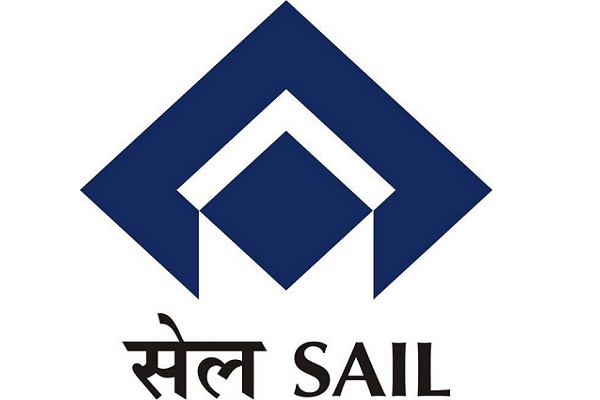Crudeoil trading range for the day is 6622-6870 - Kedia Advisory

Gold
Gold prices experienced a modest increase of 0.25% yesterday, settling at 65,750 rupees per ounce as market participants eagerly awaited the U.S. Federal Reserve's monetary policy decision and Chairman Jerome Powell's remarks for clues on future rate cuts. As expected, the Fed kept interest rates unchanged within the target range of 5.25%-5.5% but signaled its intention to implement three rate cuts by the end of the year. Additionally, the Committee revised its forecast for real GDP growth upward to 2.1%, a significant improvement from the previous estimate of 1.4% in December. Despite the optimistic economic outlook, gold continued to find support from persistent safe-haven demand and central bank purchases amid geopolitical uncertainties. China's continued accumulation of gold reserves for 16 consecutive months highlighted the metal's appeal as a hedge against uncertainty. However, subdued activity in the physical gold market tempered some of the bullish sentiment. Swiss gold exports in February declined from their eight-year high, although exports to India rose notably as local jewellers geared up for the wedding season. In January, the Reserve Bank of India (RBI) made its largest gold purchase since July 2022, acquiring 8.7 tonnes of gold. From a technical standpoint, the gold market saw short covering, with a decrease in open interest by -3.04% alongside a price increase of 167 rupees. Currently, gold is finding support at 65,575 rupees, with potential downside testing at 65,400 rupees. Resistance levels are likely to be encountered at 65,890 rupees, with a breakout potentially leading to prices testing 66,030 rupees.
Trading Ideas:
* Gold trading range for the day is 65235-67425.
* Gold prices hit record highs after the Fed signalled three rate cuts in 2024
* The number of Americans filing new claims for unemployment benefits unexpectedly fell last week
* Fed commentary bolstered expectations of a June rate cut.
Silver
Silver prices experienced a slight decline of -0.31% yesterday, settling at 75,081 rupees, influenced by several key factors affecting global markets. The strength of the U.S. economy and high interest rates, coupled with a surprise decision by the Swiss National Bank (SNB) to cut interest rates, bolstered risk sentiment and enhanced the global appeal of the U.S. dollar. The Federal Reserve opted to keep rates unchanged but upwardly revised the Federal Funds Rates (FFR) projections for 2025. Despite maintaining rates at 5.25%-5.50% since May 2023 and continuing balance sheet reduction at the same pace, Fed officials emphasized the solidity of the U.S. economy and the robustness of the labor market. Fed Chair Jerome Powell reiterated the need for more evidence before considering rate cuts, emphasizing the central bank's commitment to its 2% inflation target despite recent higher-than-expected inflation figures. Mixed business activity readings in the U.S. added to market uncertainty, making it challenging to predict the pace of economic deceleration. While signs of cooling in the labor market were observed, the economy added more people to the workforce than anticipated, and fewer individuals applied for unemployment benefits. From a technical perspective, the silver market saw long liquidation, with a drop in open interest by -2.93% alongside a decrease in prices by 232 rupees. Currently, silver finds support at 73,705 rupees, with potential downside testing at 72,330 rupees. Resistance levels are likely to be encountered at 77,390 rupees, with a breakout potentially leading to prices testing 79,700 rupees.
Trading Ideas:
* Silver trading range for the day is 72330-79700.
* Silver dropped as the strength of the U.S. economy weighed
* Fed’s Powell emphasized the US economy's solidity and labor market's robustness.
* Higher-than-expected inflation figures at the start of the year did not change the broader story of price gains slowing.
Crude oil
Crude oil prices experienced a marginal decline of -0.22% yesterday, settling at 6,733 rupees, as market participants weighed the demand and supply dynamics. The latest data from the U.S. Energy Information Administration (EIA) revealed a second consecutive week of decline in crude inventories, with stockpiles unexpectedly dropping by 2 million barrels to 445 million barrels by the week ended March 15. This decline was attributed to increased exports and heightened refining activity, evidenced by a rise in oil refinery runs and utilization rates. Furthermore, gasoline inventories recorded their seventh consecutive weekly decline, decreasing by 3.3 million barrels to 230.8 million barrels, indicating robust fuel demand. Despite steady business activity in March, rising prices across various sectors raised concerns about sustained inflation levels, particularly following an uptick earlier in the year. Geopolitical tensions in Eastern Europe also influenced crude oil trading, with Ukrainian attacks on Russian refineries leading investors to anticipate potential disruptions in global petroleum supplies. Additionally, the U.S. Energy Information Administration (EIA) forecasted a rise in oil output from the top shale-producing regions in April, projecting the highest level of production in four months at 9.77 million barrels per day (bpd). From a technical standpoint, the crude oil market witnessed long liquidation, with a notable drop in open interest by -15.31% alongside a slight price decrease of 15 rupees. Currently, crude oil finds support at 6,678 rupees, with potential downside testing at 6,622 rupees. Resistance levels are likely to be encountered at 6,802 rupees, with a breakout potentially leading to prices testing 6,870 rupees.
Trading Ideas:
* Crudeoil trading range for the day is 6622-6870.
* Crude oil dropped as traders assess the demand and supply outlook.
* Crude inventories in the United States, fell for a second week.
* Stockpiles unexpectedly declined by 2mbls to 445 mbls, as exports rose and refiners continued to increase activity.
Natural gas
Natural gas prices faced a decline of -1.41% yesterday, settling at 139.9 rupees, primarily driven by forecasts indicating lower demand over the upcoming weeks and a larger-than-expected storage build reported last week. These factors, combined with ongoing outages at Freeport LNG in Texas, which are expected to constrain gas flow to liquefied natural gas (LNG) export plants, weighed on market sentiment. The U.S. Energy Information Administration (EIA) revealed that utilities added 7 billion cubic feet (bcf) of gas into storage during the week ended March 15, marking the first build since November 2023. This build came earlier than usual, as utilities typically commence gas storage injections in late March or early April. The continued outages at Freeport LNG, with two of the three liquefaction trains expected to remain out of service through May for testing and repairs, added further pressure on prices. According to financial firm LSEG, gas output in the Lower 48 U.S. states declined to an average of 100.2 billion cubic feet per day (bcfd) in March, down from 104.1 bcfd in February and a monthly record high of 105.5 bcfd in December 2023. From a technical perspective, the natural gas market experienced long liquidation, with a significant drop in open interest by -19.97% alongside a marginal price decrease of -2 rupees. Presently, natural gas finds support at 137.8 rupees, with potential downside testing at 135.6 rupees. Resistance levels are likely to be encountered at 142.4 rupees, with a breakout potentially leading to prices testing 144.8 rupees.
Trading Ideas:
* Naturalgas trading range for the day is 135.6-144.8.
* Natural gas eased on forecasts for less demand over the next two weeks.
* Also weighing on prices was the expectation that the amount of gas flowing to LNG export plants would remain low.
* EIA said utilities added 7 bcf of gas into storage during the week ended March 15.
Copper
Copper prices edged up by 0.39% yesterday, settling at 763.15 rupees, buoyed by optimistic sentiment among investors who were anticipating interest rate cuts by the U.S. central bank later this year. The Federal Reserve opted to maintain interest rates unchanged but indicated its readiness to implement rate cuts by at least three-quarters of a percentage point in the coming months, despite recent reports of elevated inflation. While China's industrial production unexpectedly accelerated in February, concerns regarding the demand for manufactured goods and new homes in the country tempered expectations for commodity purchases. Despite these factors, copper futures remained 5% higher for the month, supported by smelters' decisions to curtail production at facilities that were unprofitable due to raw material shortages. China's refined copper production in January and February rose by 10.7% compared to the previous year, reaching around 2.22 million metric tons, according to data from the country's National Bureau of Statistics. However, copper production in Peru witnessed a slight decline of 1.2% in January compared to the same period last year, totaling approximately 205,375 metric tons. This decrease was attributed to a 17% drop in output from MMG's Las Bambas mine and a 13.4% fall from Freeport-McMoRan's Cerro Verde mine. From a technical standpoint, the copper market experienced fresh buying activity, with a notable increase in open interest by 27.87% alongside a modest price uptick of 2.95 rupees. Presently, copper finds support at 754.8 rupees, with potential downside testing at 746.5 rupees. Resistance levels are likely to be encountered at 771.2 rupees, and a breakout above this level could lead to prices testing 779.3 rupees.
Trading Ideas:
* Copper trading range for the day is 746.5-779.3.
* Copper gains amid upbeat sentiment as investors eyed interest rate cuts by Fed.
* Chinese deliverable copper inventories on the week ending March 15th, magnifying seasonal restocking
* China's refined copper production in January and February rose 10.7% from the prior year
Zinc
Zinc prices saw a modest increase of 0.29% yesterday, settling at 222.05 rupees, largely due to supply concerns stemming from disruptions in major zinc mines globally. Glencore Plc's decision to halt operations at its McArthur River zinc and lead mine in Australia following heavy rainfall contributed to the supply shortfall. Additionally, delays in the start of the Ozernoye zinc mine in Russia and the suspension of Europe's largest zinc mine, Tara, further exacerbated the supply constraints. In Peru, zinc miner Volcan, backed by Glencore Plc, announced the temporary suspension of operations at three of its mines in the country as it updates its operating permit for the Rumichaca tailings dam. Despite these disruptions, data from the International Lead and Zinc Study Group (ILZSG) indicated that the global zinc market shifted to a surplus of 58,700 metric tons in January, compared to a deficit of 46,800 tons in the previous month. Glencore Plc recently resumed production at its Nordenham zinc smelter in Germany, which had been on care and maintenance for over a year. The decision to restart production comes amid surging power prices in Europe following Russia's invasion of Ukraine. >From a technical standpoint, the zinc market experienced fresh buying activity, with a notable increase in open interest by 3.14% alongside a modest price increase of 0.65 rupees. Presently, zinc finds support at 221 rupees, with potential downside testing at 219.9 rupees. Resistance levels are likely to be encountered at 223.7 rupees, and a breakout above this level could lead to prices testing 225.3 rupees.
Trading Ideas:
* Zinc trading range for the day is 219.9-225.3.
* Zinc gains as Glencore halts major zinc mine in Australia after heavy rainfall
* Glencore backed Peru miner Volcan halts three mines over permits
* Global zinc market swings to surplus in January, ILZSG says
Aluminium
Aluminium prices saw a notable increase of 0.78% yesterday, settling at 208.05 rupees, driven by growing buying interest amid improving demand prospects, particularly from China, the world's largest consumer of aluminium. Import data from China revealed a significant surge in unwrought aluminium and products, indicating robust demand growth of 93.6% compared to the same period last year. In China's Yunnan province, aluminium smelters resumed operations due to improved power supply policies, with expectations of annual output recovery reaching approximately 500,000 tons. This rebound in production follows a period of halted operations and reduced output due to decreased hydropower supplies during the dry season last year. On the global front, primary aluminium output increased by 3.9% year-on-year to 5.544 million tonnes in February, according to data from the International Aluminium Institute (IAI), indicating a steady expansion in production. The People's Bank of China (PBoC) opted to keep lending rates unchanged at the March fixing, maintaining the one-year loan prime rate (LPR) and the five-year rate at record lows. This decision aims to stimulate economic activity amidst challenges from the property sector and low consumer confidence. Additionally, the PBoC hinted at the possibility of further cuts in banks' reserve requirement ratios (RRR) and affirmed its commitment to using monetary policy tools to stabilize consumer prices. From a technical standpoint, the aluminium market experienced fresh buying, with a notable increase in open interest by 46.82% alongside a price uptick of 1.6 rupees. Presently, aluminium finds support at 207.2 rupees, with potential downside testing at 206.3 rupees. Resistance levels are likely to be encountered at 208.8 rupees, and a breakout above this level could lead to prices testing 209.5 rupees.
Trading Ideas:
* Aluminium trading range for the day is 206.3-209.5.
* Aluminium climbed as buying interest increased with improving demand from China.
* China imported 720,000 tons of unwrought aluminium and products in the January-February this year, up 93.6%.
* Aluminum ingot inventory rose at a slower pace and is likely to peak.
Cotton
Cotton prices experienced a decline of -0.8% yesterday, settling at 62040 rupees per candy, driven by several factors impacting the global cotton market. The Cotton Association of India (CAI) revised its cotton production estimates upwards for the current season, projecting a higher production of 309.70 lakh bales compared to the previous estimate of 294.1 lakh bales. This upward revision, along with increased supply expectations globally, contributed to the downward pressure on prices. In addition to the higher production estimates in India, Cotton Australia raised its production forecast to "at least" 4.5 million bales, benefiting from widespread rainfall. However, U.S. cotton production forecasts for the current season were reduced, based on the March 8 Cotton Ginnings report, leading to lower ending stocks. Despite these adjustments, global cotton supply and demand estimates for 2023/24 showed higher production, consumption, and trade, but lower ending stocks. Furthermore, the Southern India Mills’ Association (SIMA) urged textile mills in the southern States to refrain from panic buying, highlighting the recent hike in domestic cotton prices. The price of the widely-used Shankar - 6 variety of cotton surged from ?55,300 to almost ?62,000 a candy in the span of two weeks. Capacity utilization at mills increased to 80%-90%, with around 20 lakh bales already contracted for exports. From a technical perspective, the cotton market witnessed fresh selling, indicated by a notable increase in open interest by 11.04% alongside a significant price decline of -500 rupees. Presently, cotton finds support at 61680 rupees, with potential downside testing at 61330 rupees. Resistance levels are likely to be encountered at 62600 rupees, and a breakout above this level could lead to prices testing 63170 rupees.
Trading Ideas:
* Cottoncandy trading range for the day is 61330-63170.
* Cotton dropped after CAI revised production estimates upwards to 309.70 lakh bales
* CCPC raised crop production for the current season to 323.11 lakh bales
* Cotton Australia raised its estimate for Australian production this year to "at least" 4.5 million bales
* In Rajkot, a major spot market, the price ended at 29102.3 Rupees dropped by -0.14 percent.
Turmeric
Turmeric prices experienced a notable decline of -5.51% yesterday, settling at 16758, primarily driven by profit booking after recent gains. Despite the previous positive bias supported by below-normal supplies and active festive demand, the market saw a correction as traders opted to secure profits. The impact of lower production became evident in arrival pace, with only 9050 tonnes reaching major APMC markets so far in March 2024 compared to 18373 tonnes during the same period last year. Supply tightness, however, remains a prevailing factor, likely to entice stockists to capitalize on price dips. Turmeric prices traditionally exhibit strength in March due to festive buying, with demand expected to remain robust amid upcoming festivals and the commencement of the wedding season. Nonetheless, production is anticipated to decline by about 14% year-on-year due to reduced cultivation area and tumbling yield, projected to range between 9.2-9.5 lakh tonnes. In terms of international trade, turmeric exports during Apr-Jan 2024 dropped by 3.52% compared to the previous year, while imports decreased by 22.34% during the same period. January 2024 witnessed a rise in exports compared to December 2023, but a significant drop compared to January 2023, reflecting fluctuations in demand. Conversely, imports in January 2024 increased compared to both December 2023 and January 2023, indicating varying supply dynamics. From a technical standpoint, the market witnessed long liquidation, with a drop in open interest by -6.31%. This occurred alongside a substantial decrease in prices by -978 rupees. Turmeric is currently finding support at 16302, with potential downside testing at 15848 levels. Resistance levels are projected at 17580, with a move above potentially leading to prices testing 18404.
Trading Ideas:
* Turmeric trading range for the day is 15848-18404.
* Turmeric dropped on profit booking after prices gained as below normal supplies
* Festivals ahead in coming months and commencement of wedding season demand is likely to keep buyers engage.
* Production is likely to be dropped by about 14% Y-o-Y due to lower area under turmeric.
* In Nizamabad, a major spot market, the price ended at 16412.05 Rupees dropped by -1.13 percent.
Jeera
Jeera prices saw a slight uptick of 0.29% yesterday, settling at 23830, amidst a backdrop of reduced arrivals in Unjha, one of the major trading hubs for cumin. This reduction in arrival numbers, coupled with a four-year high in jeera acreage for the current rabi season, underscored the complex dynamics influencing the market. Farmers in key producing states like Gujarat and Rajasthan expanded cultivation, driven in part by record prices observed in the previous marketing season. The correlation between market prices and acreage expansion was evident, with Gujarat witnessing a substantial 160% increase in jeera cultivation area compared to the previous year. However, challenges loom on the horizon, including emerging weather risks in Rajasthan and Gujarat that could adversely affect yields. Lower water availability, reduced cold days, and concerns about fusarium wilt attacks on crops add further complexity to the situation. Despite India anticipating a potentially bumper crop, global demand for Indian jeera has slumped, with buyers preferring alternative sources like Syria and Turkey due to higher prices in India. Export volumes have consequently declined, with jeera exports during Apr-Jan 2024 dropping by 25.33% compared to the same period in the previous year. In the midst of these dynamics, technical indicators suggest fresh buying in the market, with a 0.21% increase in open interest and a corresponding rise in prices by 70 rupees. Jeera is currently finding support at 23620, with potential downside testing at 23390 levels. Resistance levels are projected at 24130, and a move above could see prices testing 24410.
Trading Ideas:
* Jeera trading range for the day is 23390-24410.
* Jeera gains as in Unjha, arrival has reduced to 35-37 thousand bags.
* Support also seen in wake of emerging weather risk in Rajasthan and Gujarat that may affect the yield.
* Stockists are showing interest in buying on recent downfall in prices triggering short covering.
* In Unjha, a major spot market, the price ended at 26073.8 Rupees gained by 0.6 percent.






















